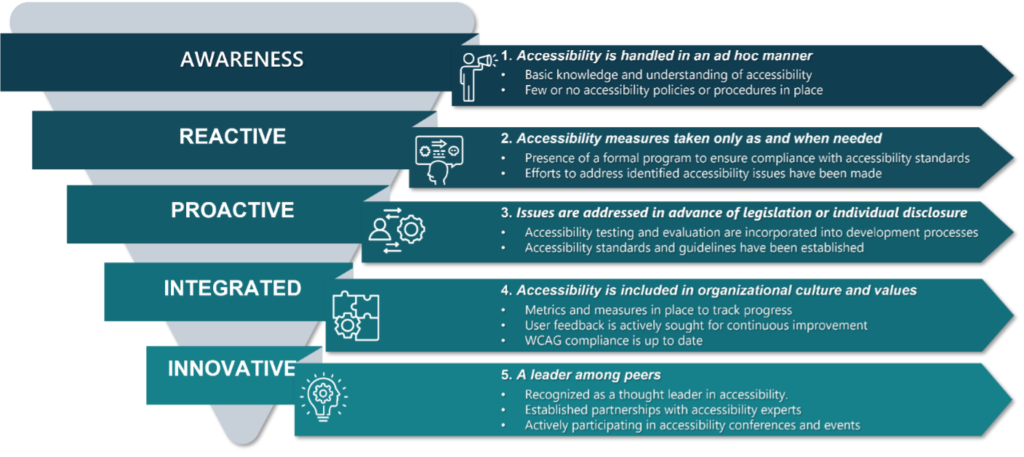Despite the implementation of the Accessible Canada Act and provincial requirements such as Ontario’s Accessible Employment Standard, a disability employment gap persists throughout Canada. Results from the 2017 Canadian Survey on Disability showed that among people aged 25 to 64, only 59% of those living with a disability were employed, compared with 80% of those without disabilities. When Canadians with disabilities are employed, they are more likely to have part-time work (less than 30 hours per week), affecting their eligibility for benefits like extended medical coverage or pension plans.
More than 6 million Canadians live with disability, and 20% of working age adults live with disability. Failing to consider workplace accessibility has serious consequences for potential employees and limits your organization’s ability to reflect and effectively serve Canada’s diversity.
Workplace accessibility goes beyond IT and workspaces and their conformity to guidelines. A holistic approach to accessibility and inclusion removes barriers to participation in the physical environment, the digital environment, and the social environment.
True accessibility should be integrated into every aspect of your strategy and operations. Becoming an accessible employer doesn’t happen overnight. The first step in this long but important journey is to assess where your organization is today in each of these dimensions.
Accessible employment begins with accessible staffing practices. From the language of your job poster to how and where candidates are assessed on their knowledge and skills, are you encouraging candidates with disabilities to apply to your organization? Once onboarded, are you ensuring that your employees are able to access all of the information and tools they need to be successful in their jobs? Does your performance management framework allow for distinction between disability-related issues and performance-related issues, or mitigate potentially negative assessments owing to personal attitudes and biases? Are your training, mentoring, and career development programs accessible to employees with disabilities?
Through our work helping Federal Government Organizations to implement different elements of the Accessible Canada Act, we have seen where certain organizations are making great strides and in which areas there is still much room for improvement. This experience led us to develop an accessibility maturity model: a lens by which we can view organizations to assess where they are in their current practices and help them to plot their roadmap toward holistic, integrated accessibility.

Accessible employment benefits all Canadians, and federal employers should lead by example. Knowing where and how to start may be daunting, but there are resources and support available to help bridge the gap and build a roadmap towards an accessible future.

